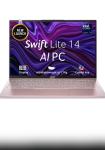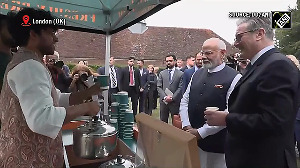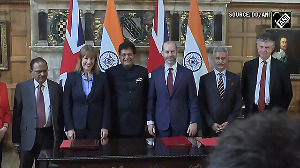The biotech company's revenues had fallen to as low as Rs 50 cr after it lost a WHO contract, but now it hopes to reach Rs 700 cr in two years.
 It's sheer luck that made you succeed in an otherwise completely risky endeavour," is what K Anji Reddy, founder and chairman of Dr Reddy's Laboratories, used to tell K I Varaprasad Reddy, founder of vaccine manufacturing company Shantha Biotechnics.
It's sheer luck that made you succeed in an otherwise completely risky endeavour," is what K Anji Reddy, founder and chairman of Dr Reddy's Laboratories, used to tell K I Varaprasad Reddy, founder of vaccine manufacturing company Shantha Biotechnics.
The latter would not only agree with this, but would have added that his company was luckier to have been acquired by French pharmaceutical major Sanofi.
Of course, Sanofi was not as lucky because in the years after buying Shantha in 2009, the vaccine maker went into a crisis when the World Health Organization (WHO) cancelled its prequalification for supply of the five-in-one vaccine, Shan5, under Unicef's global vaccination programme.
The vaccine was for use in paediatrics to prevent diphtheria, pertussis, tetanus, hepatitis B and haemophilus influenzae type B.
In fact, it was this $340 million (Rs 1,500 crore at the time) Unicef contract that Shantha won in 2008 for the supply of Shan5 from 2010 to 2012 that had caught the attention of global pharma players, including Sanofi and GlaxoSmithKline. They had quickly initiated acquisition bids, seeing a big potential in the Indian company.
The repercussions of WHO cancelling the contract in 2010 due to quality issues dealt a big blow to Sanofi, by then the owner of Shantha, as the vaccine manufacturer's annual revenues fell to as low as Rs 50 crore in the subsequent years from around Rs 290 crore in 2009.
It is only after May 2014, when WHO restored Shantha's prequalification for supplying the pentavalent vaccine, that the company recommenced selling the vaccine across the globe.
It won approval from WHO after it had reworked its manufacturing process to meet the health body's standards.
With the company finally breathing again, there is optimism about the future. "With the supply of the pentavalent vaccine and other plans, we hope to reach Rs 600-700 crore in revenues over the next couple of years," says 67-year-old Varaprasad Reddy, now the non-executive chairman of the Hyderabad-based Shantha.
The turnaround
Shantha's performance in the four years since 2010 wasn't a big setback for Sanofi, whose global revenues stood at euro 32.95 billion in 2013.
In fact, Sanofi did more than just wait out the crisis - it actually worked to bring about a turnaround at Shantha.
Besides pumping in Rs 750 crore of fresh equity into the Hyderabad company, it also built a new facility that will take Shantha's tetanus toxoid (TT) vaccine manufacturing capacity to 1.5 billion doses from the 350 million currently.
The company has also recently started work on a human insulin manufacturing project at an investment of Rs 470 crore in Hyderabad, and Sanofi is expected to pump in another Rs 500 crore when it takes up the second phase of this project.
Called the insuman project, it is expected to produce affordable insulin for diabetics. The Sanofi subsidiary is also planning to launch a hexavalent (six-in-one) vaccine by adding the cholera antigen to the pentavalent vaccine that it produces at present.
Shantha's efforts to create affordable vaccines lay behind the success of Shan5. The pentavalent vaccine used to cost $83 per dose, but the product that Shantha came up with sold at just 23 cents.
This created a new paradigm in affordable vaccination in India and across the world. The company hopes to boost its revenues with similarly produced cheaper six-in-one vaccine and insulin. Inspired by Shantha, several other Indian companies have joined the business, and vaccine manufacturing has now become a $5 billion industry.
Conscious of Shantha's global image and reputation as the world's largest vaccine maker, Sanofi had continued with the production of pentavalent vaccine in the Hyderabad plant for almost a year and a half despite its inability to sell the product, all the while working to ensure that the problem of white sedimentation on the inner walls of the vaccine vials, cited by WHO, would no longer be a problem.
"We had supplied 25 million vials of the vaccine by the time WHO announced the cancellation of our prequalification," Varaprasad Reddy recalls. Following WHO's decision, Unicef had diverted the supply to Cyrus Poonawalla's Serum Institute of India.
"As we had made Shan5 into a very thin-margin business, it was impossible to withstand such a big financial shock," adds Reddy.
The Shantha facilities were incurring an operational expenditure of Rs 70 crore every year while generating only Rs 50 crore in revenues in the absence of earnings from the pentavalent vaccine.
"We could survive only because of the hand-holding by Sanofi," admits Reddy. "Sanofi supported us for over three-and-half years without expecting anything in return."
A pioneer
In his memoirs, An Unfinished Agenda: My Life In The Pharmaceutical Industry, the late Anji Reddy had cited Shantha as being India's first biotechnology company and credited it with producing affordable vaccines using the chromosome recombinant technology developed by it in the face of technology denial from the West.
Amazingly, the man who led this revolution was not even a biotechnologist, but an electronics engineer.
Varaprasad Reddy and some friends started Shantha Biotechnics in 1993 to make the country's first indigenously developed recombinant hepatitis B vaccine.
Against severe odds, the vaccine, branded Shanvac-B, finally came out in 1997. When he started incubating the research project first at OsmaniaUniversity and later at the Centre for Cellular and Molecular Biology in Hyderabad, the vaccine was being imported at $35 a vial and was available in the domestic market at Rs 840 for three doses, well out of reach for most Indian families.
Shantha changed the business by offering an equally efficacious vaccine at around $1 a dose.
BACK IN THE GAME
- 1993: K I Varaprasada Reddy starts a project to develop Shanvac-B, the first indigenously developed hepatitis B vaccine; invests Rs 1.8 crore
- 1994: Oman Foreign Minister Yousuf Bin Alawi Abudulla invests Rs 1.8 crore for 50 per cent stake
- 1996: Shantha gets Rs 8 crore from the Technology Development Fund launched by Government of India
- 1997: Shanvac-B is launched
- 1999: Shantha receives WHO pre-qualification to supply Shanvac-B for the global vaccination programme
- 2005: The company starts exporting the vaccine
- 2009: Sanofi acquires 70 per cent stake in Shantha Biotechnics
- 2010: WHO cancels the pre-qualification, citing the formation of a white sediment on the walls of glass vials when stored
- 2014: Shantha receives pre-qualification for the vaccine again in May. Starts exports for global vaccination programme from October







